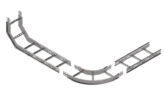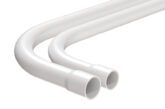
Martin Boorman of Prysmian looks at safe and reliable cable options for garden lighting.
Most garden lighting installations will use mains voltage – it’s a more robust system appropriate for the challenging environment of the great outdoors and can be installed without the need to use a transformer.
Keeping the lights on requires the cable to be selected and installed correctly with a focus on protecting it both mechanically and electrically.
It’s a requirement of the Wiring Regulations that any cable buried in the ground shall have an earthed armour as part of its design. They also require cables to be selected to appropriate British Standards. For armoured cables, use cable manufactured and independently certified to British Standard specification BS5467. This ensures all the electrical and physical properties are compliant, including the galvanised steel in the armour, which has superior resistance to corrosion.
The armour serves two functions. Firstly, it provides mechanical protection that will help limit accidental damage to the cable. Secondly, it forms part of the electrical protection. When installed and terminated properly, the armour provides an earthed connection to the panel, protecting persons from the live conductors within. Should any metal object (spade or rotivator, for example) penetrate the outer sheath, it will make contact with the armour and will activate the protection at the panel. If someone hit an unarmoured cable with a metal object, there is the potential to hit a phase conductor and electrocute themselves.
The cable should also be buried safely out of harm’s way. The Wiring Regulations (both the current version and the revision due to be introduced this year) specify that it should be buried “at a sufficient depth to avoid being damaged by any reasonably foreseeable disturbance of the ground”. “Sufficient depth” has traditionally been taken as a minimum of 500mm in the UK.
PVC armoured cables are intended for free draining soil. The trench should therefore be well drained to ensure the cable isn’t sitting in water. Clay type soils/backfills aren’t considered suitable as they inhibit the migration of water in the trench.
It makes sense to run the cable under a path, if possible, and for additional safety it’s advisable to mark the trench with electrical marker tape around 100mm above to give an “early warning” that the cable is beneath.
To minimise the possibility of moisture ingress affecting the cable it’s wise to keep joints to a minimum: careful measurement of the required length is good practice – not forgetting to add sufficient length for the vertical travel to each light fitting. If joints are unavoidable then a resin-filled joint kit is the most reliable way to create a robust cable joint.
Where the cable enters the light fitting or the junction box on the outside wall of the house, the appropriate gland must be used to ensure a waterproof connection is made that is strong enough to prevent any accidental disconnection and also to maintain the continuity of the earth characteristic.
This process may seem time-consuming, but ensuring that a garden lighting system remains fully operational and safe over a number of years does require a robust installation procedure.
For more information about the range of cabling products available from Prysmian visit: www.whyprysmian.co.uk








